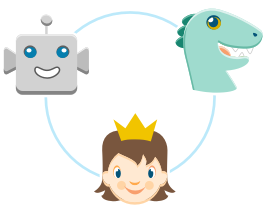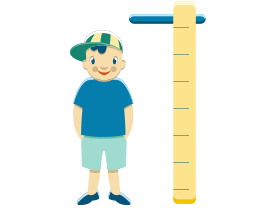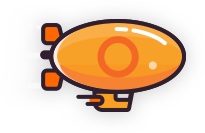Full Text
“Hi!”
“Hi, Sid, eat your cereal. It’s almost time for school.”
“Okay, Mom!
“Hey, what’s that smoke coming out of the tea kettle?”
“When water gets very, very hot, it turns into steam. Now eat your cereal.”
“Whoa! That’s amazing! I just learned something new about water!
“Gotta go tell my friends at school!”
“Bye, Mom!
“Hi, Teacher Susie!”
“Hi!”
“So, you know the water that comes out of the faucet at home? Well, when water is like that, we call it a liquid. Aaand sometimes that water can change. I wonder how it changes and what else water can change into. I’m gonna go ask my friends.”
“Yeah . . . talking about water makes me thirsty!”
“Hi, Sid.”
“Hi, May. Do you know any ways that water can change?”
“Yes, I know a way. When it’s very cold outside, the water becomes really hard—kind of like a rock!
“That’s called ice. Like ice cubes or glaciers at the North Pole.”
“What about you, Gabriela? How else can water change?”
“I know! I’ve observed that sometimes water changes when it gets very, very hot.
“Heating water in a pan makes it turn into a cloud that floats away in the air.”
“Hey, that’s exactly what I observed in my kitchen this morning. My mom called it steam!”
“Okay, everyone, come on in!”
“Oh boy! It’s time for class!”
“Yay!”
“I heard that you all noticed that water changes depending on its temperature.”
“So, what does temperature mean?”
“Temperature is how you feel inside and outside. For example, you may feel warm or you may feel cold. Temperature is measured with a thermometer. And so we see that when the temperature falls below thirty-two degrees, water changes into ice.”
“Yes, Teacher Susie! It becomes hard, like a rock!”
“May is right, scientists! The water has changed to the solid state from the liquid state.
“But if the temperature gets warmer and makes the thermometer rise above the freezing mark, then the ice melts and the water becomes liquid again.”
“Ooh . . .”
“I have a question. What happens if you heat up water?”
“The water will stay in the liquid state until it heats up to 212 degrees. Starting at that temperature, it boils and then changes into steam.”
“And it floats away like a cloud.”
“Right, Gabriela!”
“Wow! Well, now we know there are three states of water! So, below the freezing mark, water is in the solid state. Above that, water is in the liquid state until it boils and changes into steam!”
“Two scientists in the house!”
“High-five! “
All right!”
“Yeah!”
“Here we are!”
“Okay, okay, okay! What’s the big surprise?”
“Just a minute. You’ll see. I put water and juice in the fridge . . .”
“And it froze into ice pops?”
“It’s gonna be so cool!
“Hey, they didn’t turn into ice!”
“Ah, the fridge isn’t cold enough to freeze water.
“Oh well . . .
“Sorry, Gabriela.”
“Don’t worry, kids. I’ve got you covered! Here we go! Two ice pops right from the freezer, where the temperature is below freezing.”
“Yay!”
“Mmm. . . .”
“Thank you!”
“Thank you!”
“Now don’t let them melt.”
“Bye, scientists!”





























